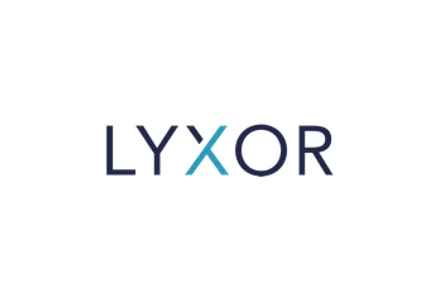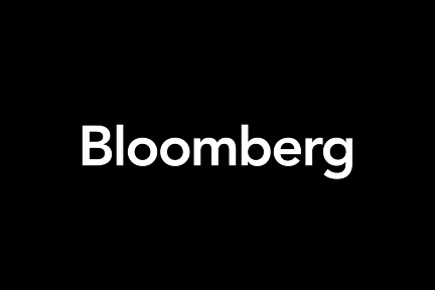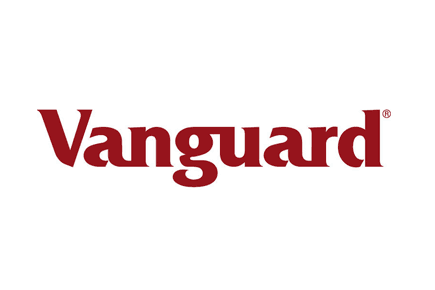A bond fund is a pooled investment containing a range of corporate and government bonds, and can offer a useful, low-cost way for you to diversify your portfolio.
I’ll take you through five of the best bond funds UK on the market that analysts are keeping their eye on, and show you how you can invest in them today.
Our best rated bond funds in the UK, June 2025

The iShares USD Treasury Bond 20+yr ETF offers exposure to US treasury bonds.
This bond fund invests in a number of different US government bonds and has a total fund size of around $3.6 billion.
According to Google Finance, the fund opened at £3.50 on the morning of 22 February 2023, marking a fairly steady decline over the past six months.
As is the case with many funds, high inflation is pushing down prices and returns. In fact, total annualised returns of the iShares USD Treasury Bond 20+yr ETF over the past year were -24.27% as of 22 February 2023.
Source: Morningstar

The Janus Henderson Strategic Bond Fund aims to invest in high-yield bonds across a number of different markets and types of bonds.
This includes:
- High-yield bonds
- Investment-grade bonds
- Corporate bonds
- Government bonds
The fund is relatively large, with figures from the Financial Timesshowing a total fund size of £2.96 billion as of 31 January 2023. And, even though its year-to-date trailing returns of -14.60% as of 22 February 2023 may seem worrying, this is to be expected during times of high inflation and rising interest rates.
One useful aspect of the Janus Henderson Strategic Bond Fund is how it hedges its assets. Since it acquires assets in currencies other than GBP, the fund will typically seek to hedge against the base currency to remove the risk of currency exchange movements.
At a time when the pound is weak compared to other currencies around the world, particularly the USD, this could make the Janus Henderson Strategic Bond Fund a potentially strong addition to your portfolio.
Source: Morningstar

The Lyxor Core UK Government Inflation-Linked Bond ETF is a bond fund that invests in UK government securities.
Since this bond fund gives you exposure to sterling-denominated bonds issued by the UK government, it tends to be relatively safe – the UK government is fairly unlikely to default on its debts. Additionally, the fund is inflation-linked, meaning it should typically move in line with inflation.
As for its size, the Financial Times reports that as of 31 January 2023, the Lyxor Core UK Government Inflation-Linked Bond ETF has a total fund size of £71.13 million.
It’s worth noting that the year-to-date performance of this bond fund is volatile, with -32.26% total trailing returns as of 22 February 2023. Even so, it may still offer decent dividend payments, as it pays twice-yearly dividends at an average 12-month yield of 0.45%.
Source: Morningstar

The SPDR Bloomberg High Yield ETF bond fund is comprised of “junk” bonds, which have been given low credit ratings by rating agencies, and so are considered below investment grade. As a result, this may be a bond fund worth considering if you want an investment that carries greater risk with the potential of higher capital growth.
Regardless of the quality of bonds held within the fund, the SPDR Bloomberg High Yield ETF offers year-to-date trailing returns of -6.21% as of 31 January 2023.
With total net assets of $9.71 billion as of 31 January 2023 according to the Financial Times, this is a fairly large fund. Yet despite the size, you may find the net expense ratio to be surprisingly low; you’ll typically only need to pay a 0.40% ongoing charge on your investment.
Source: Morningstar

Vanguard’s Total Bond Market ETF bond fund invests in investment-grade government bonds. As US-backed government bonds have a high credit rating, this is a relatively low-risk bond fund.
The fund is made up of more than 17,000 different bonds, with total assets equating to around $86.5 billion as of 22 February 2023, making it the largest fund on my list.
Despite the lower risk, the fund’s returns are surprisingly positive. After registering total returns of -13.11% in 2022, year-to-date total returns are 0.56% as of 23 February 2023.
Source: Morningstar
What is the best bond fund to invest in?
Technically, there is no “best bond fund” to invest in. The “best” completely depends on your tolerance for risk and your reasons for investing.
Indeed, if you have a low tolerance for risk but don’t mind holding onto your stakes in the funds for a long period of time before you see a return, you may want to join other lower-risk investors and invest in long-term bond funds. This might include the Lyxor Core UK Government Inflation-Linked Bond ETF.
This is because, while funds that invest in government bonds tend to offer lower returns, they are also generally lower risk
Or, if you have a higher tolerance for risk, and would prefer to target greater potential returns over a shorter period of time, you could consider investing in a fund that allows you to gain exposure to short-term bonds. In this case, options such as the SPRD Bloomberg High Yield fund could be right for you.
This is because corporate high-yield bonds offer the potential for greater returns in exchange for a higher default risk.
Make sure you tailor your choice to your personal risk tolerance and investment goals.
5 easy steps to invest in a bond fund
Follow my easy step-by-step guide to start investing in bond funds today.
1. Open an account with a broker
First, you’ll need to find a broker account that allows you to trade bond funds.
There are many different brokers available, each coming with its own set of benefits, so you should compare the features of each broker to decide which best suits you and your investment strategy.
For example, you may find that some brokerages have low trading fees. This may be best for investors who are planning on trading large volumes of shares, as fees won’t eat as much into any trading profits.
Or, if you’re still an investing beginner, you may want to consider a broker account that offers a wide range of educational and research materials. This way, you can learn more about investing while actively trading.
Also, many brokers have differing non-trading fees, such as inactivity charges or minimum deposit requirements. If you don’t want to be too committed to your trading account and only wish to trade every now and then, you may want to consider an account with low non-trading fees.
Of course, you should ensure that your desired broker offers access to the bond funds you want to trade, too.
Compare the different brokers on offer and weigh up your options before you settle on one. Please read my comprehensive guide on some of the best brokers available in the UK if you wish to find out more.
2. Decide which fund you wish to invest in
Now that you have a brokerage account, the next step is deciding which fund you wish to invest in.
Using my list above, you should ideally compare the different types of bond funds and decide which best suits you. For example, ifdo you have a high tolerance for risk and wish to expose your money to the potential for higher returns,? Tthen you may want to invest in a high-yield bond fund.
Or, if you are a passive, long-term investor, you may want to consider a bond fund that offers lower returns and carries less risk.
Ultimately, you should invest in funds that align with your investing strategy and appetite for risk.
3. Deposit funds to your brokerage account
This should be simple enough – Just find your broker’s “deposit” feature, input the amount of money you wish to deposit, and make the transfer.
One thing that’s worth keeping in mind is how much you deposit. You should ideally only deposit the amount of money you intend to invest in bond funds. This is because you’re unlikely to receive any interest on uninvested money left sitting in your investing account. In this case, your capital’s purchasing power could be eroded in real terms due to inflationary pressures.
4. Purchase your desired fund
You’re finally ready to purchase units in your chosen bond fund. This is another simple step – all you need to do is search for the instrument you wish to invest in, input the amount of money you want to invest in the fund, and make the trade.
You should now see the units in your chosen bond fund in your portfolio.
5. Monitor any price movements and sell at the right time
Congratulations, you’re now a bond fund investor! However, the hard work doesn’t stop here, as you’ll need to keep a close eye on how prices move.
If you’re an active, short-term investor, you should ideally be tracking price movements on a daily basis. This is because, if you’re planning on selling your stake in the bond fund for a profit, you need to be ready to catch the price increases.
Meanwhile, if you’re a passive, long-term investor, then this may not apply as much to you, as you will likely be relying on payments from the fund over a long period of time and won’t be too interested in selling them for a profit.
However, even if you are a passive investor, you should still keep an eye on price movements – if the price of your bond fund drops suddenly, you may want to cut your losses and sell.
What is a bond fund?
A bond is a financial instrument that represents a loan made by a government or organisation. When a government or business wishes to raise capital for any projects they may have, one method of generating money is through the issuing of bonds.
So, say you purchased a treasury bond from the UK government. You would essentially be “loaning” the government money to use on public works. You will typically be paid regular interest from this bond, called the coupon, and given a fixed date that the bond expires.
When this bond expires, you will typically be paid back the amount you invested. This is how bond traders earn a profit – they accrue interest on top of the original investment.
Meanwhile, a fund works by pooling money from multiple retail investors and then trading different financial instruments. A fund is typically overseen by a fund manager, a professional who will make decisions on the fund’s underlying holdings.
Since a fund provider will invest in a wide variety of different assets, you are essentially gaining wide diversification from a single investment, as the fund is exposed to a number of different assets.
So, when you combine the two, you get a bond fund.
As the name suggests, a bond fund is simply a pooled investment fund that takes your money and invests it in a number of different bonds. These work similarly to equity funds, though instead of investing in companies listed on the stock market, they are holding bonds bought on bond markets.
You can either speculate on bond funds by buying a stake in them and then selling them at a later date for a profit when the price increases. Alternatively, you can hold on to them for a long period of time and rely on a fixed income from the fund.
These regular payments are called “dividends”, and income paid from them typically depends on the performance of the fund. This can make them useful additions to income portfolios.
Do bond funds make good investments?
First off, I can’t stress enough how important diversification is for your portfolio. You ideally want to spread the risk of your investments across a number of different areas and sectors; this way, should the worst happen, and the stock market takes a downturn, your portfolio won’t be as negatively affected.
One way to potentially diversify your portfolio is through bond funds. In fact, the price of bonds tends to move inversely to interest rates – when interest rates rise, bond prices tend to fall.
Since central banks – in the UK’s case the Bank of England – tend to increase interest rates during periods of rising inflation, this means that the price of bonds tends to drop.
So, rapid interest rate movements bring extra risk when it comes to investing in bond funds – a phenomenon known as “interest rate risk”.
While bonds typically offer lower returns when compared to stocks and shares on the equity markets, they are typically lower risk. This is because you are given an expiry date, and you know exactly when you will receive your investment back.
Also, the stability of a bond usually relies on the stability of the issuing company or government. For example, if you invested in US government bonds, there is a fairly low chance these will default as the US government is considered relatively stable.
Of course, while all of this should give you a rough idea of whether bond funds are an attractive investment, there are many different types on offer. Some may better suit you than others, so keep reading to find out about the different types of bond funds you can invest in today.
What are the different types of bond funds?
There have been several times in this guide that I’ve mentioned the different types of bonds that a fund may invest in. Here, you can read about the different types of bonds listed on the market, and the benefits and downsides that each brings.
Corporate bond funds
A corporate bond is a loan issued by a company to raise capital for any projects they may have planned. So, a corporate bond fund is simply a fund that invests in these corporate bonds.
A corporate bond fund tends to focus on higher-quality, investment-grade bonds. Compared to higher yield bonds, corporate bonds tend to have a lower risk of defaulting as the companies are more likely to be able to pay off their debts. However, a result of this lower risk is that they tend to offer lower yields.
High-yield bond funds
Another type of bond fund you can invest in is a high-yield bond fund. These invest in bonds that offer a higher annual yield, in compensation for the additional risk you take on. These bonds are typically issued by companies that may be less likely to be able to pay off their debts, meaning there’s a higher chance of the bond defaulting.
Even though these types of bond funds may sound promising, it’s worth taking your appetite for risk into account. If you don’t think you could handle the extra pressures of high-risk investments, you should avoid them.
Government bond funds
Government bonds are simply bonds issued by a government to raise money for any projects they may have.
In the UK and several other Commonwealth nations, government bonds are commonly referred to as gilts. So, as you can imagine, a government bond fund is a pooled investment that will invest in government bonds.
Since governments tend to be more stable than corporations, you may find that gilt bond funds have lower default rates, but also lower potential yields, than corporate bonds. Though, it’s worth keeping in mind that bonds issued on emerging markets may have higher default risks since these governments are considered “less stable”.
Strategic bond funds
A strategic bond fund is a fund that has the freedom to invest in a plethora of different instruments. For example, a strategic bond fund could invest in a mixture of government bonds, corporate bonds, and high-yield bonds.
Strategic bond funds tend to have different objectives – some may be focused on high returns for their investors, while others may be more tailored towards sheltering their investors’ wealth.
Global bond funds
A global bond fund invests in different types of bonds that are issued right across the globe. They will typically diversify their investments by purchasing bonds in currencies other than pound sterling, which gives them exposure to foreign currencies.
For example, a global bond fund may invest in both sterling- and dollar-denominated corporate bonds to hedge against both currencies. And, similarly to strategic bond funds, a global bond fund can invest in different forms of bonds, including government, corporate, and high-yield bonds.
Index-linked bond funds
An index-linked bond fund is a fund that invests in bonds, but also aims to move in line with rising costs as much as possible by paying coupons that have been adjusted for inflation.
These index-linked bond funds will track an inflation indicator, such as the Consumer Price Index (CPI), then pay investors the real yield plus any accrued inflation.
Since the price of bonds tends to move inversely to interest rates, and thus inflation, an index-linked bond fund could make a potentially strong investment during times of high inflation.
Best Bond Funds UK FAQs
Which Vanguard bond fund is the best in the UK?
The best Vanguard bond fund depends on your investment strategy and tolerance for risk. If you have a high tolerance for risk in return for more potential returns, you could consider the Vanguard High-Yield Corporate Fund.
Or, if you have a lower tolerance for risk, and are happy with smaller potential returns, you may want to think about investing in the Vanguard Total Bond Market ETF.
Are bond funds still a good investment?
Bonds are a good investment in the sense that they give you a further diversified portfolio. However, one thing you should keep in mind is that rising interest rates, and in turn inflation, pushes down the price of bonds and bond funds.
Please note:
The value of your investments (and any income from them) can go down as well as up and you may not get back the full amount you invested. Past performance is not a reliable indicator of future performance. Investments should be considered over the longer term and should fit in with your overall attitude to risk and financial circumstances.
